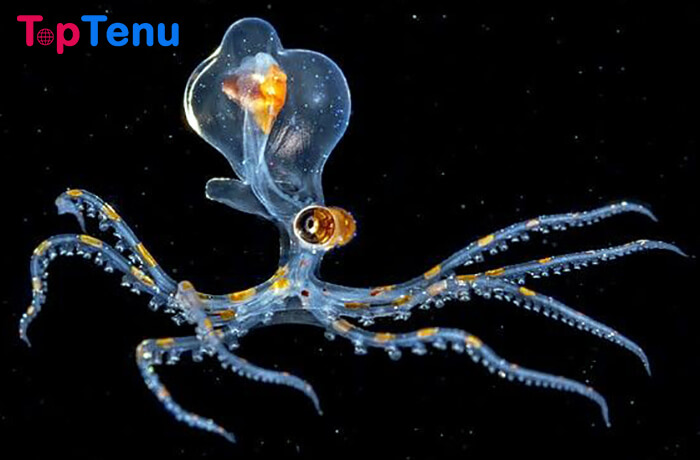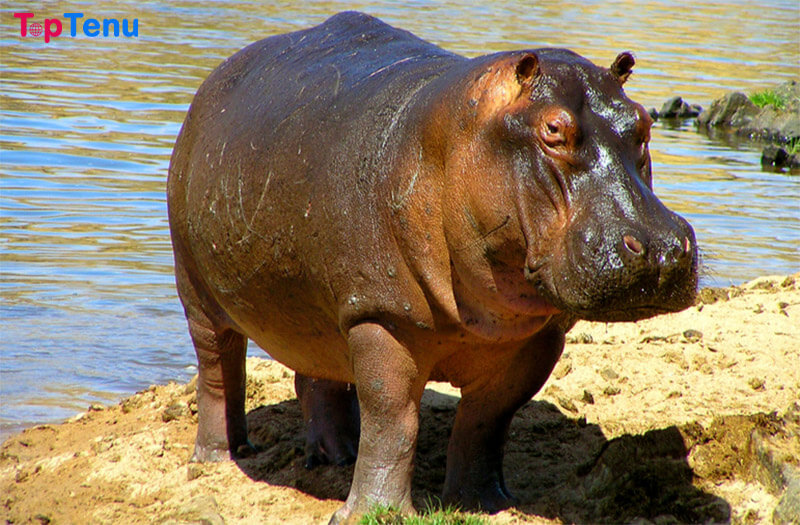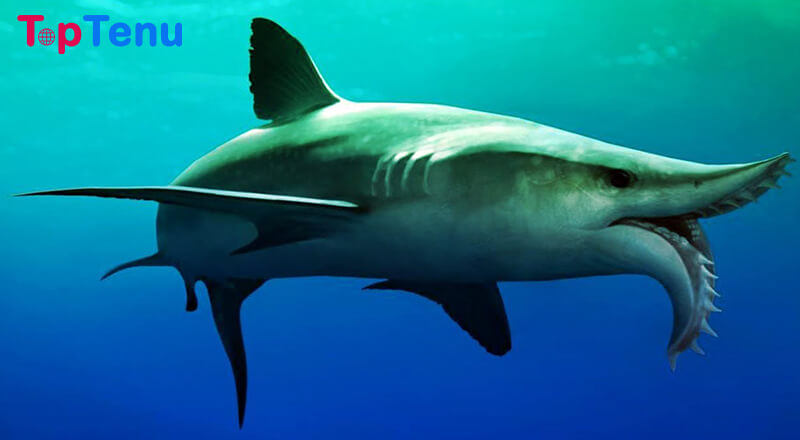In this Article, We Share the list of the Top 10 Animals with Bizarre Dietary Behaviors. Don’t Waste time Let’s Start!!!!
What is a bizarre diet in the animal kingdom? They eat insects, their own poop, and sometimes their children. You might think you have seen it all. But take a look at these bizarre eating habits. Some are quite bizarre, while others look straight out of your nightmares.
1. Dung Beetles

Dung beetles have been known to spend their whole lives rolling up poo balls and pushing them around. They are coprophagous, which means they eat the excrement of other animals. The dung beetle begins its day by searching for excrement in a pile. Because it contains nutrients, the beetles love the excrement of herbivores like cattle and elephant herds. The only thing they need is poo. Beetles are able to smell the smell of dung far away and gather in large numbers around cattle droppings. Even if the beetles have never been in a relationship, there is a chance they will find a partner near the droppings. Female beetles will often propose to their males by offering them a stinky ball of feces. If the lady beetle is impressed by the proposal, she will follow the male to roll the ball off to a nesting spot, where they will eventually mat. Two dung beetles will dig a hole in a patch of soft soil and then bury their ball in it. The soil around the dung is then dug into tunnels. The female will then mate with the male and lay her eggs in the pile of poop. Their mom will feed them stinking poo when the larvae hatch. The larvae of beetles prefer the solid, undigested parts of the dung to adults. Dung beetles, despite their sloppy eating habits, are actually quite fascinating creatures. In terms of strength-weight ratio, they are the strongest animal on Earth. Dung beetles can use the cosmos for navigation. Some nocturnal dungbeetles even use polarized moonlight to roll the ball of poo back from base. They push the ball forward with their rear legs, and roll it in a straight line till they reach home.
2. Burying Beetles

These beetles are the undertakers in the insect world. They love to eat the decaying, stinky flesh of dead and dying animals. They are found in many parts of the world and eat small mammals and birds carcasses. Their antennas are capable of picking up dead bodies’ scents from far away, often within one hour of their death. The beetles must reach the site quickly or they will lose their prize to another carrion-loving creature, such as a raven, or another burying insect. The larger of the two burying beetles will win the scavenging contest if they find the same carcass. If the male beetle finds the carcass, he will release chemical pheromones into the air. This is basically a signal to other females to mate with him. Female burying beetles will only dig males that have a lot of rotting flesh. The couple starts a complex, lengthy process to make the carrion suitable for future consumption once the females have arrived. The couple begins by removing all fur and feathers from dead animals. Next, they make a protein rich secretion with their mouths and anus. This acts as a preservative to keep the flesh from becoming contaminated by microbes. Then they roll the carcass into balls and make small incisions at the top. They then cover the entire thing with feathers, fur, and finally, they burrow it in the ground. After making love, the beetles find a spot to mate near the grave. The female then digs up a small nursery next to the corpse and places her eggs there. The young beetles hatch and mommy gives them a nutritious meal made of decaying flesh with anal secretions. The beetle larvae love it and even touch mom’s lips with their tiny antennae to ask her for food. The mother then eats the rotten flesh, and the young ingest it. Burrowing beetles can be very caring parents. Both mom and dad stay around to care for their young after mating, which is something that we don’t often see in other insect species. The larvae begin to pupate after about two weeks of food. The larvae emerge as adults after 48-60 days.
3. Dracula Ants

Scientists around the world are raving about this newly discovered species. They are intrigued by it because it has a morphological similarity to modern-day wasps. But the most bizarre thing about it is how it feeds. It is a blood-drinking insect, as you may have guessed by its name. It doesn’t drink blood from animals or humans, which is quite surprising considering the terror it would cause if there were a whole horde. It eats the plasma-like blood of its larvae. These ants chew on their young until the fluids run out of their bodies. Then they drink it. Vampire ants were discovered in numerous locations around the globe. They are believed to be made up of several species. These insects are believed to be the “missing connection” between ants, wasps and ants. This means that the secrets to modern-day ants’ evolution from ancient wasps may lie in their DNA. Their abdomens connect directly to their waists like other species of ants. Although their bizarre feeding habits are quite disgusting, they are actually very similar to other species of ants. Fire ants, for example, cannot digest solid food so they feed it to their larvae. The nursery is a place where workers ants leave solid food for the larvae to chew. The larvae then ingest the semi-digested food. The same is true for Dracula ants. They also give solid food to their young. These guys, unlike other ants, don’t depend on the children’s puke. Their sharp jaws are used to cut up the larvae, and they then consume their blood as an energy drink. Although the young ones aren’t killed, they are left with scarring all over their bodies. Biologists call this “non-destructive cannibalism”, but most people refer to it as “eating your children’s lunch.”
4. Lampreys

We have a new contender to the title of most disgusting animal you’ve ever seen. It is the lamprey. The mouth of the lamprey is Buzzsaw-shaped and has hook-like teeth that can latch onto any living creature who dares to swim near it. Lampreys can be found in both fresh and coastal waters. They are also found in temperate areas around the globe, with the exception of Africa. Although it is not clear if mommy was there to see all the eggs hatch, the lamprey has a beautiful face that only a mother would love. Their circular mouths are supported instead by cartilage rings. The multiple rows of teeth that a lamprey has in its mouth sink into the skin of fish and anchor it to its sides. It then eats the blood of the fish and stays there, unable to move. The lamprey’s teeth aren’t sharp, but they are actually hooked backwards. They are there to help the lamprey secure its prey onto the skin. The lamprey’s spiky tongue does the real damage. It has very little sharp structures to remove the tissue and blood beneath the skin of the fish. The lampreys’ bodies are actually a treasure trove of genetic information. These fishes have existed for half a million years. Each lamprey is capable of regenerating itself from a severed spine cord. Biologists are trying to unravel the mystery behind lampreys miraculous regeneration. Paralysis and old age may be extinct when they succeed.
5. The Assassin Bug

The insect world is full of terrifying creatures that only exist to eat other insects, but the assassin bugs do their job more discreetly. This tiny critter has been fine-tuned by evolution to kill, with its powerful forelegs and venomous nose. The bug can kill insects larger than it and its venom can also cause severe pain to adults, though it is not fatal. There are many species of assassin insects that exist around the globe. Each has its own method of killing prey. Some even use mimicry and camouflage to lure prey into their grasp. One type of assassin insect, for example, parks itself on webs of spiders to mimic a trapped insect. The assassin grabs the spider and turns it into something quick to eat when it approaches. Although they have different hunting methods, assassin insects all carry the same weapon: a long oral appendage that secretes toxic chemicals. The assassin bugs hold their prey using their strong front legs. After piercing it with their snouts, the toxin liquefies its innards in seconds. They then slurp the liquefied contents with their snouts just as we do a smoothie. The exoskeleton is what remains of their prey. This camouflage is used by some species of assassin insects to lure their prey closer. That’s quite smart, right?
6. Parasitic Jaegers

Parasitic jaegers and artic skuas make up some of the most aggressive seabirds around the world. They are known as kleptoparasites and steal food from other species. They can also harass other birds like terns, puffins and seagulls who are carrying fish back to their nests for their young. These winged maniacs dive-bomb other birds and pluck them mid-air, causing them to regurgitate their food in terror. When they aren’t busy hunting other birds, skuas will hunt small mammals, fish, and insects. Skuas have been known to eat eggs from birds nests. In winter, however, stolen puke can make up as much as 95% in a skua’s diet. A whole gang of skuas will chase down a target that is too large for one skua and chase it until it gives up. If the skua gang gets bored with stealing, they will chase after their prey until it dies.
7. Amphibians that feed on their mothers skin

Caecilians look strangely like giant earthworms because of their long segments, but they are actually amphibians. They are related to salamanders and frogs. Caecilians are burrowing animals that can grow up to 5 feet in length and can be found in tropical soils. The most bizarre and grossest thing about these creatures is the fact that they spend their first few days eating mommy’s skin. They eat skin until they can hunt for their own food. Caecilians hatching from fresh eggs have razor-sharp teeth and a large mouth compared to their bodies. They go into an intense skin-eating frenzy immediately after hatching. Some even fight over the same piece. Scientists found that the mother was not at all hurt by the babies’ gruesome destruction of her skin. In fact, she created a special type of skin that is easy to remove and rich in nutrients for her children. She can also grow a new layer of skin every 3 days so that the little devils have enough food.
8. Cymothoa Exigua

Imagine that you purchased a fish for dinner and as you are about to cut it open, you see a pair of tiny eyes peering up from the fish’s mouth. Slowly reaching out to open the fish’s mouth, the tongue rises up and bites. After this horrible incident, you won’t likely be eating fish for a while. Except for the biting, the rest of the incident is true. It was actually a marine parasite that was found inside the fish’s mouth. Multiple reports have been made of fish being purchased by people who found a marine parasite inside their fish’s mouth. Cymothoa exigua, a tiny marine parasite, is part of the isopods crustaceans family. It is related to lobsters and crabs. This creepy-looking underwater bug, however, is not like its crustacean cousins. It lives inside fishes’ mouths and eats their tongues. It uses its legs as anchors to stay in place. When the time comes, it will reproduce within the fish’s body. Although Cymothoa exigua may still be a larva, it can swim across the oceans in search of a host fish. Once it has found the right fish, it will quickly swim inside the gills to attach itself to the base and tongue using its strong hind legs. The parasite then begins sucking blood by piercing the tongue with its claws. The parasite’s size increases and the amount of blood reaching the tongue decreases. Eventually, the organ will become infected. The parasite attaches to the tongue muscles and acts as a pseudo-tongue. The male tongue eaters are born as males. However, if another male enters the fish’s gills with a parasite, the older tongue eater will switch sex to mating with the new male. The larvae from intercourse are then released to find a new fish to eat.
9. The Leaf-cutter Ant

This little ant’s diet is not like the others on the list. These are the only known insects that can cultivate food. These tiny critters are able to use their powerful jaws and cut leaves to transport them to the nest. Leaf cutter ants can carry 10 times their own weight. Once they reach the nest, worker Ants cut down the leaves and place them in fungal chambers. These chambers are used as breeding grounds for certain species of fungi. The ants then get to enjoy the amazing fertilizer made from ant saliva, feces, and moisture. Because they are unable to digest plant material directly, these ants use a complex process of cultivating mushrooms to meet their nutritional requirements. This makes them more civilized than their wild brothers, who will kill anything they see and eat the mutilated remains.
10. Tear Drinking Moths

In 2006, scientists discovered a new species of Madagascar’s tear-drinking moth. It uses its harpoon-shaped proboscis and pokes under the eyes of sleeping birds to drink their tears. Although there are reports of moths prowling the night in search for water, they have never been reported to drink from birds. This Madagascan moth snoops on sleeping birds every night and extends its frightening looking proboscis (an oral appendage shaped as a harpoon that has a tip covered with spikes), sliding it under the bird’s eyelids until the hook snaps into place. The irritation caused by the protruscis’ spikes touching the eyes causes the moth to release tears, which it then happily drinks. This is quite remarkable as the moths can be seen to stick to birds’ necks and sucking on their eyes for up to 35 minutes. Birds don’t seem to notice any disturbance. Many theories exist about why these moths are so fond of sucking on the sorrow of others. The most popular theory is that moths consume the tears to replenish their sodium levels. The moth is not like us humans, who have easy access and can acquire salt. Additionally, the soil in their natural habitat has a very low sodium content. Both for daily metabolism and reproduction, the moths need sodium. A male moth mate with a female and gives away about two-thirds of his sodium. The female then uses the sodium to lay many eggs, which turn out to be adult tear-drink moths.




